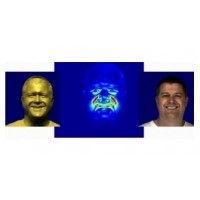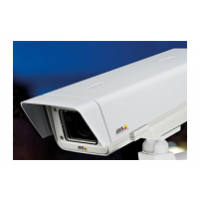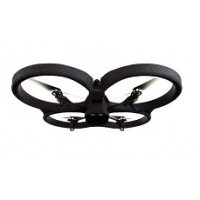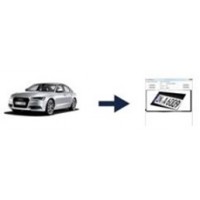|
|
 The history of video surveillance is as exciting as the technology behind it. As a matter of fact, it goes back further in time then a lot of people know. Research indicates that as early as 1965, US police have been utilizing video surveillance in public areas. By the year 1969, police cameras had been mounted in strategic places in municipal buildings in New York City. This set a strong preceden ...Read more
The history of video surveillance is as exciting as the technology behind it. As a matter of fact, it goes back further in time then a lot of people know. Research indicates that as early as 1965, US police have been utilizing video surveillance in public areas. By the year 1969, police cameras had been mounted in strategic places in municipal buildings in New York City. This set a strong preceden ...Read more
|
| |
| |
|
|
 Face recognition works by making a digital representation of an individual’s facial image. It does this by thoroughly analyzing facial structures using features like cheekbones, nose, eyes and lips. Essentially, it develops a detailed map of the lines, angles as well as features of the face and then digitally saves this map as a file. The file has all the details that were collected during the p ...Read more
Face recognition works by making a digital representation of an individual’s facial image. It does this by thoroughly analyzing facial structures using features like cheekbones, nose, eyes and lips. Essentially, it develops a detailed map of the lines, angles as well as features of the face and then digitally saves this map as a file. The file has all the details that were collected during the p ...Read more
|
| |
| |
|
|
 IP stands for Internet Protocol, which basically means an online web address. So, how does it associate with video surveillance? Most digital video surveillance technology is connected to a network. Even older systems that utilizes an analog camera can convert the signals into digital images with the use of video encoders or DVRs. However a real IP surveillance system utilizes IP based cameras. Th ...Read more
IP stands for Internet Protocol, which basically means an online web address. So, how does it associate with video surveillance? Most digital video surveillance technology is connected to a network. Even older systems that utilizes an analog camera can convert the signals into digital images with the use of video encoders or DVRs. However a real IP surveillance system utilizes IP based cameras. Th ...Read more
|
| |
| |
|
|
 South African Police (Saps) Use License Plate Recognition (LPR)to Help Catch Criminals ...Read more
South African Police (Saps) Use License Plate Recognition (LPR)to Help Catch Criminals ...Read more
|
| |
| |
|
|
 How and why drones are used for video surveillance is a broad subject that is continually evolving with the latest innovation. This article will discuss what a drone is, how it works and why it is used for video surveillance. ...Read more
How and why drones are used for video surveillance is a broad subject that is continually evolving with the latest innovation. This article will discuss what a drone is, how it works and why it is used for video surveillance. ...Read more
|
| |
| |
|
|
 License Plate Recognition or LPR is a technology that is capable of processing images to identify vehicles through license Plates. With increasing security concern surrounding crimes and violence, LPR technology plays a vital role, and is typically used in numerous traffic applications for security. LPR is known to have originated in UK by the British Police Department in the year 1976. ...Read more
License Plate Recognition or LPR is a technology that is capable of processing images to identify vehicles through license Plates. With increasing security concern surrounding crimes and violence, LPR technology plays a vital role, and is typically used in numerous traffic applications for security. LPR is known to have originated in UK by the British Police Department in the year 1976. ...Read more
|
| |
| |
 The history of video surveillance is as exciting as the technology behind it. As a matter of fact, it goes back further in time then a lot of people know. Research indicates that as early as 1965, US police have been utilizing video surveillance in public areas. By the year 1969, police cameras had been mounted in strategic places in municipal buildings in New York City. This set a strong preceden ...Read more
The history of video surveillance is as exciting as the technology behind it. As a matter of fact, it goes back further in time then a lot of people know. Research indicates that as early as 1965, US police have been utilizing video surveillance in public areas. By the year 1969, police cameras had been mounted in strategic places in municipal buildings in New York City. This set a strong preceden ...Read more  Face recognition works by making a digital representation of an individual’s facial image. It does this by thoroughly analyzing facial structures using features like cheekbones, nose, eyes and lips. Essentially, it develops a detailed map of the lines, angles as well as features of the face and then digitally saves this map as a file. The file has all the details that were collected during the p ...Read more
Face recognition works by making a digital representation of an individual’s facial image. It does this by thoroughly analyzing facial structures using features like cheekbones, nose, eyes and lips. Essentially, it develops a detailed map of the lines, angles as well as features of the face and then digitally saves this map as a file. The file has all the details that were collected during the p ...Read more  IP stands for Internet Protocol, which basically means an online web address. So, how does it associate with video surveillance? Most digital video surveillance technology is connected to a network. Even older systems that utilizes an analog camera can convert the signals into digital images with the use of video encoders or DVRs. However a real IP surveillance system utilizes IP based cameras. Th ...Read more
IP stands for Internet Protocol, which basically means an online web address. So, how does it associate with video surveillance? Most digital video surveillance technology is connected to a network. Even older systems that utilizes an analog camera can convert the signals into digital images with the use of video encoders or DVRs. However a real IP surveillance system utilizes IP based cameras. Th ...Read more  South African Police (Saps) Use License Plate Recognition (LPR)to Help Catch Criminals ...Read more
South African Police (Saps) Use License Plate Recognition (LPR)to Help Catch Criminals ...Read more  How and why drones are used for video surveillance is a broad subject that is continually evolving with the latest innovation. This article will discuss what a drone is, how it works and why it is used for video surveillance. ...Read more
How and why drones are used for video surveillance is a broad subject that is continually evolving with the latest innovation. This article will discuss what a drone is, how it works and why it is used for video surveillance. ...Read more  License Plate Recognition or LPR is a technology that is capable of processing images to identify vehicles through license Plates. With increasing security concern surrounding crimes and violence, LPR technology plays a vital role, and is typically used in numerous traffic applications for security. LPR is known to have originated in UK by the British Police Department in the year 1976. ...Read more
License Plate Recognition or LPR is a technology that is capable of processing images to identify vehicles through license Plates. With increasing security concern surrounding crimes and violence, LPR technology plays a vital role, and is typically used in numerous traffic applications for security. LPR is known to have originated in UK by the British Police Department in the year 1976. ...Read more 